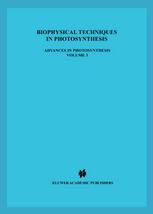

Most ebook files are in PDF format, so you can easily read them using various software such as Foxit Reader or directly on the Google Chrome browser.
Some ebook files are released by publishers in other formats such as .awz, .mobi, .epub, .fb2, etc. You may need to install specific software to read these formats on mobile/PC, such as Calibre.
Please read the tutorial at this link: https://ebookbell.com/faq
We offer FREE conversion to the popular formats you request; however, this may take some time. Therefore, right after payment, please email us, and we will try to provide the service as quickly as possible.
For some exceptional file formats or broken links (if any), please refrain from opening any disputes. Instead, email us first, and we will try to assist within a maximum of 6 hours.
EbookBell Team

4.0
16 reviewsProgress in photosynthesis research is strongly dependent on instrumentation. It is therefore not surpr- ing that the impressive advances that have been made in recent decades are paralleled by equally impressive advances in sensitivity and sophistication of physical equipment and methods. This trend started already shortly after the war, in work by pioneers like Lou Duysens, the late Stacy French, Britton Chance, Horst Witt, George Feher and others, but it really gained momentum in the seventies and especially the eighties when pulsed lasers, pulsed EPR spectrometers and solid-state electronics acquired a more and more prominent role on the scene of scientific research. This book is different from most others because it focuses on the techniques rather than on the scientific questions involved. Its purpose is three-fold, and this purpose is reflected in each chapter: (i) to give the reader sufficient insight in the basic principles of a method to understand its applications (ii) to give information on the practical aspects of the method and (iii) to discuss some of the results obtained in photosynthesis research in order to provide insight in its potentalities. We hope that in this way the reader will obtain sufficient information for a critical assessment of the relevant literature, and, perhaps more important, will gain inspiration to tackle problems in his own field of research. The book is not intended to give a comprehensive review of photosynthesis, but nevertheless offers various views on the exciting developments that are going on.